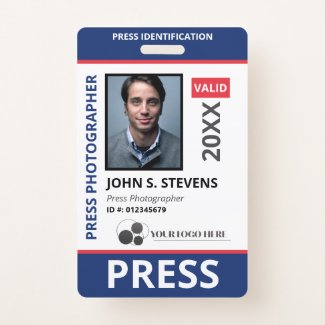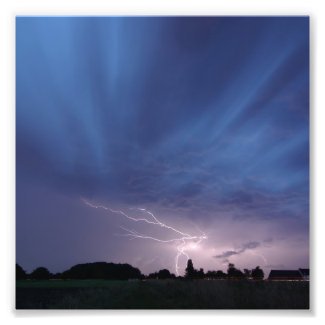Before You Leave Home
1. Know where you're planning on taking your photographs. Take some time to plan out parking, driving routes, etc in advance. Don't forget, you'll be travelling at least one direction in the dark.
2. Know when and where the sun is setting or the moon is rising if you what to include them in your photos. We use a program called Ephemeris to figure out when and where the sun and moon are rising and setting. For a review of Ephemeris - see our article on the program in the newsletter archives at www.hankinslawrenceimages.com.
3. Check the weather forecast. That way you'll know if you need to dress for cooler weather after dark, and how much cloud cover to expect (not that the the weather report helped us on the latter). It is easy to get cold standing around waiting for the right photographic opportunity after the sun has gone down.
4. Use bug spray in the appropriate seasons. If you're going to be anywhere near water or in the woods, apply a heavy application of bug-spray. You're likely to be sitting or standing for a while in the same place, no point in making yourself an extra attractive meal for the local bugs.
What to Take With You for a Nighttime Photo Shoot
5. Bring (and use) a tripod.
It's not uncommon to have exposures of a second or more during night photography. With anything over 1/30 of a second, you really should use a tripod to ensure that camera shake doesn't affect your photo.
6. Bring a bubble level.
Bubble levels let you know if your camera is level, so you don't have the annoying problem of images running down hill in your pictures. See our article on bubble levels in the newsletter archives for more information.
7. Bring a cable release for your camera.
If your camera allows for a cable release for remote operation of the shutter button, use it. On long exposures, the camera shake caused by pushing down the shutter button on your camera can sometimes be seen in your photos. If you don't have a cable or other remote release for your camera, use the self-timer when possible.
8. Bring your cell phone.
Remember, you're going to be out in the dark, having a cell phone with you for emergencies is only common sense. If you're going out with another photographer, it helps if you both have phones with you. That way - if you get separated, it's much easier to find one another in the dark.
Bill and I learned this lesson the hard way - we were taking photos at an event, it got dark, and we spent at least half an hour wandering around looking for one another in the dark before we reconnected.
9. Bring a flashlight.
A pocket flash light is a great tool to have when you're doing photography. Not only can it light up your camera dials so you can see how your camera is set, it can also help light the path on the way back to the car. For more information on the pocket flash lights we use, see the article on the topic in our newsletter archives.
Setting Your Camera
The more control you have over the settings on your camera, the more likely you are to be able to take good night photos. If camera only has automatic settings, you may have some real challenges convincing it to let you take your photos.
10. Turn off the flash. Most on-camera flashes only light up an area five to six feet in front of the camera. What happens at night, is that it may overexpose anything in the foreground, and underexpose the main subject of the photo
11. Use higher speed film or set the ISO higher on your digital camera if you need a faster shutter speed. The higher the ISO/ASA, the shorter the exposures you can get away with. If your exposure is planned at ISO 100 for 2 seconds at F8.0 - using ISO 400, you can do a 1/2 second exposure at the same F8.0. Some digital cameras show higher than usual noise levels for long exposures - it is worth checking if your camera has a long exposure noise reduction feature.
12. Understand what your camera's light metering system will do - or meter separately and use manual settings on your camera. Modern consumer cameras, particularly the higher level ones, tend to have sophisticated metering systems but night time photography involves tricky lighting situations, with very bright and dark areas in the same photo.
Understanding what your light meter is making its readings from, and the type of exposure you are likely to get, will ensure properly exposed photos.
If you're not getting the photos you want with the automatic metering, take control by either setting the camera manually or using exposure compensation. If you have a digital camera with a histogram function, use this to help understand how well your metering is working.
13. Bracket your photos. If your camera lets you bracket shots automatically, you definitely should turn the feature on at night. My normal setting is to shoot the exposure I've set, then bracket the shot with a ½ shutter speed step up, and then a ½ shutter speed step down. For example, if my exposure is set at F8.0 for 1/20 if a second, I'll shoot that shot, then one at F8.0 for 1/30 of a second and one at F8.0 for 1/15 of a second. This increases my chances of getting the shot that I really want.
14. Using manual focus may help save time. Chances are, you're going to shoot multiple exposures of the same shot. So use the auto focus feature on your camera to set the first shot, then without changing the focus, switch to manual focus. That way, if your camera has trouble focusing in the dark, it won't have to keep searching for a focus lock. The nice thing about photographing monuments and buildings is that they don't move - so once the lens is focused, you don't have to keep refocusing it with every shot. You should check every now and then, however, to make sure that you have not bumped the lens and changed the focus.
15. Use the mirror lockup function. If your camera allows you to lock the mirror in place, do so. Believe it or not, on some long exposures, the internal workings of the camera cause enough vibration to make camera shake visible in the photo. Locking the mirror into place reduces the chances of camera shake being introduced in this way.
Taking the pictures
16. Take lots of photos. Be sure to take a lot of photos when you're doing night photography, and try them at different exposures. Somewhere in the group, there may well be a spectacular photo, that was the result of an experimental combination of shutter speed and aperture. Remember, film is cheap, and for digital camera users, there is always the trash can for unwanted images.
17. Try some photos before the night is pitch black. Sometimes having some color left in the sky can add to the photo. Check out the example photos against the evening sky and night sky on our online version of the article.
18. Review your shots. If you are using a digital camera, take advantage of the instant feedback to see if you are recording what you want to. Also, if your camera has a histogram function, be sure to check it periodically to make sure you aren't underexposing or overexposing parts of your image.
19. Have fun!
About the Authors Patty Hankins & Bill Lawrence are the co-owners of Hankins-Lawrence Images, LLC, a digital photography company based in Maryland. HLI Photonotes, their monthly ezine, provides information and tips for photographers. To subscribe email hl_images@earthlink.net with subscribe in the subject or visit www.hankinslawrenceimages.com.
Related Pages
Home :-: Shop :-: Coloring :-: Clip Art :-: Printables
Search :-: Privacy :-: Site Index





